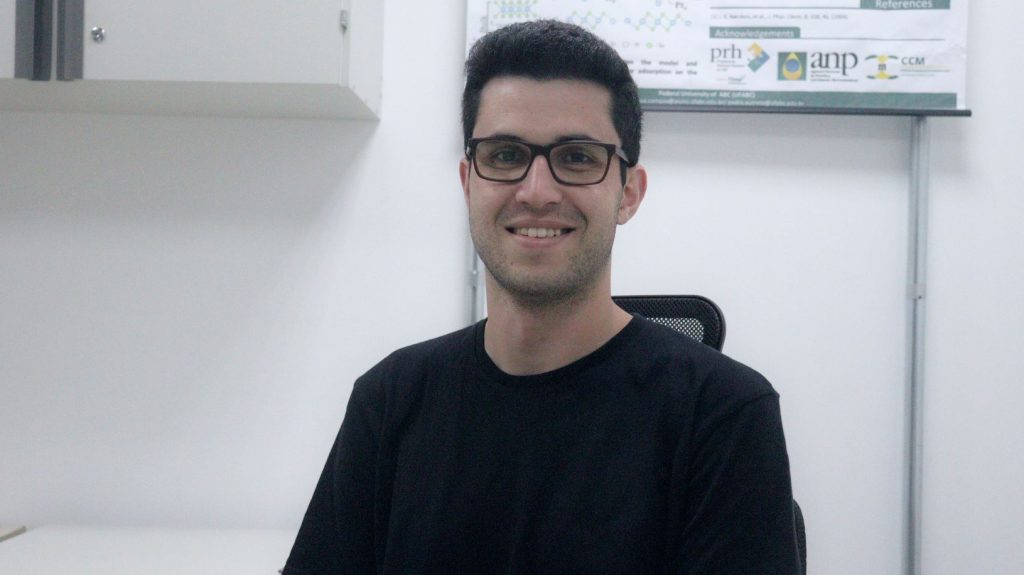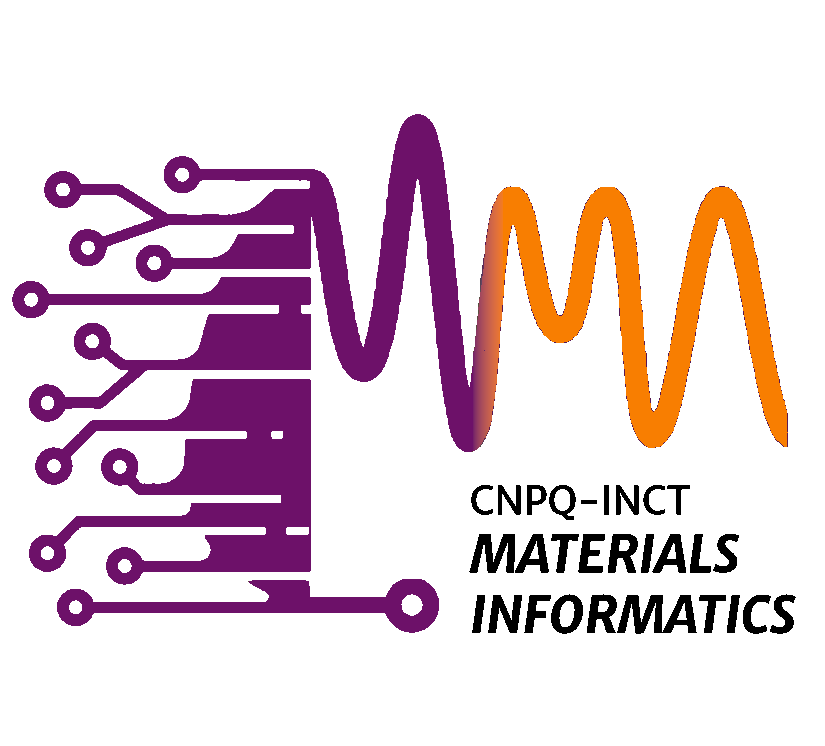
Publicações de Pedro Autreto
Khatun, Salma; Alanwoko, Onyedikachi; Pathirage, Vimukthi; de Oliveira, Caique C.; Tromer, Raphael M.; Autreto, Pedro A. S.; Galvao, Douglas S.; Batzill, Matthias Solid State Reaction Epitaxy, A New Approach for Synthesizing Van der Waals heterolayers: The Case of Mn and Cr on Bi2Se3 Journal Article Em: Adv Funct Materials, 2024, ISSN: 1616-3028. Resumo | Links | BibTeX | Tags: Biomaterials, Condensed Matter Physics, Electrochemistry, Electronic, Optical and Magnetic Materials Mahapatra, Preeti Lata; de Oliveira, Caique Campos; Costin, Gelu; Sarkar, Suman; Autreto, Pedro A. S.; Tiwary, Chandra Sekhar Paramagnetic two-dimensional silicon-oxide from natural silicates Journal Article Em: 2D Mater., vol. 11, não 1, 2023, ISSN: 2053-1583. Resumo | Links | BibTeX | Tags: Condensed Matter Physics, General Chemistry, General Materials Science, Mechanical Engineering, Mechanics of Materials Sousa, J M De; Machado, L D; Woellner, C F; Medina, M; Autreto, Pedro A. S.; Galvão, D S Boron nitride nanotube peapods at ultrasonic velocity impacts: a fully atomistic molecular dynamics investigation Journal Article Em: J. Phys.: Condens. Matter, vol. 35, não 33, 2023, ISSN: 1361-648X. Resumo | Links | BibTeX | Tags: Condensed Matter Physics, General Materials Science de Oliveira, Caique Campos; Autreto, Pedro A. S. Optimized 2D nanostructures for catalysis of hydrogen evolution reactions Journal Article Em: MRS Advances, vol. 8, não 6, pp. 307–310, 2023, ISSN: 2059-8521. Links | BibTeX | Tags: Condensed Matter Physics, General Materials Science, Mechanical Engineering, Mechanics of Materials2024
@article{Khatun2024,
title = {Solid State Reaction Epitaxy, A New Approach for Synthesizing Van der Waals heterolayers: The Case of Mn and Cr on Bi_{2}Se_{3}},
author = {Salma Khatun and Onyedikachi Alanwoko and Vimukthi Pathirage and Caique C. de Oliveira and Raphael M. Tromer and Pedro A. S. Autreto and Douglas S. Galvao and Matthias Batzill},
doi = {10.1002/adfm.202315112},
issn = {1616-3028},
year = {2024},
date = {2024-03-12},
urldate = {2024-03-12},
journal = {Adv Funct Materials},
publisher = {Wiley},
abstract = {
keywords = {Biomaterials, Condensed Matter Physics, Electrochemistry, Electronic, Optical and Magnetic Materials},
pubstate = {published},
tppubtype = {article}
}
2023
@article{Mahapatra2023,
title = {Paramagnetic two-dimensional silicon-oxide from natural silicates},
author = {Preeti Lata Mahapatra and Caique Campos de Oliveira and Gelu Costin and Suman Sarkar and Pedro A. S. Autreto and Chandra Sekhar Tiwary},
url = {https://iopscience.iop.org/article/10.1088/2053-1583/ad10b9/meta},
doi = {10.1088/2053-1583/ad10b9},
issn = {2053-1583},
year = {2023},
date = {2023-12-12},
urldate = {2024-01-01},
journal = {2D Mater.},
volume = {11},
number = {1},
publisher = {IOP Publishing},
abstract = {
keywords = {Condensed Matter Physics, General Chemistry, General Materials Science, Mechanical Engineering, Mechanics of Materials},
pubstate = {published},
tppubtype = {article}
}
<jats:p>Silicon dioxide’s potential for having magnetic properties is fascinating, as combining its electronic capabilities with magnetic response seems promising for spintronics. In this work, the mechanisms that drive the change from diamagnetic behavior in pure silicates like SiO<jats:sub>2</jats:sub> to paramagnetic behavior in transition metal-doped silicates like Rhodonite silicate (CaMn<jats:sub>3</jats:sub>Mn(Si<jats:sub>5</jats:sub>O<jats:sub>15</jats:sub>)) are explored. This naturally occurring Rhodonite (R)-silicate was thinned down while retaining its magnetic properties by liquid-phase scalable exfoliation. Exfoliating R-silicate into the two-dimensional (2D) structure by LPE increases magnetic coercivity, and the internal resistance to demagnetization (ΔHc) up to ∼23.95 Oe compared to 7.08 Oe for its bulk phase. DFT spin-polarized calculations corroborate those findings and explain that the origin of the magnetic moment comes mainly from the Mn in the doped 2D silicate due to the asymmetrical components of the Mn d and Si p states in the valence band. This result is further illustrated by the spin component differential charge densities showing that Mn and Si atoms display a residual up spin charge. Rhodonite’s unusual magnetic behavior has considerable potential for spintronics, data storage, and sensing technologies. Understanding the complex relationships between the structural, magnetic, and electronic properties of silicates is essential for developing new materials and composites as well as for driving future research.</jats:p>@article{DeSousa2023,
title = {Boron nitride nanotube peapods at ultrasonic velocity impacts: a fully atomistic molecular dynamics investigation},
author = {J M De Sousa and L D Machado and C F Woellner and M Medina and Pedro A. S. Autreto and D S Galvão},
doi = {10.1088/1361-648x/acd50b},
issn = {1361-648X},
year = {2023},
date = {2023-08-23},
urldate = {2023-08-23},
journal = {J. Phys.: Condens. Matter},
volume = {35},
number = {33},
publisher = {IOP Publishing},
abstract = {
keywords = {Condensed Matter Physics, General Materials Science},
pubstate = {published},
tppubtype = {article}
}
<jats:p>Boron nitride nanotube peapods (BNNT-peapod) are composed of linear chains of C<jats:sub>60</jats:sub> molecules encapsulated inside BNNTs, they were first synthesized in 2003. In this work, we investigated the mechanical response and fracture dynamics of BNNT-peapods under ultrasonic velocity impacts (from 1 km s<jats:sup>−1</jats:sup> up to 6 km s<jats:sup>−1</jats:sup>) against a solid target. We carried out fully atomistic reactive molecular dynamics simulations using a reactive force field. We have considered the case of horizontal and vertical shootings. Depending on the velocity values, we observed tube bending, tube fracture, and C<jats:sub>60</jats:sub> ejection. Furthermore, the nanotube unzips for horizontal impacts at certain speeds, forming bi-layer nanoribbons ‘incrusted’ with C<jats:sub>60</jats:sub> molecules. The methodology used here is applicable to other nanostructures. We hope it motivates other theoretical investigations on the behavior of nanostructures at ultrasonic velocity impacts and aid in interpreting future experimental results. It should be stressed that similar experiments and simulations were carried out on carbon nanotubes trying to obtain nanodiamonds. The present study expands these investigations to include BNNT.</jats:p>@article{Oliveira2023b,
title = {Optimized 2D nanostructures for catalysis of hydrogen evolution reactions},
author = {Caique Campos de Oliveira and Pedro A. S. Autreto},
doi = {10.1557/s43580-023-00549-7},
issn = {2059-8521},
year = {2023},
date = {2023-06-00},
urldate = {2023-06-00},
journal = {MRS Advances},
volume = {8},
number = {6},
pages = {307--310},
publisher = {Springer Science and Business Media LLC},
keywords = {Condensed Matter Physics, General Materials Science, Mechanical Engineering, Mechanics of Materials},
pubstate = {published},
tppubtype = {article}
}
Orientados e Supervisionados por Pedro Autreto

Bruno Ipaves
Vínculo: Pós-Doutorado
Instituição: Universidade Federal do ABC (UFABC)
Laboratório: GEEDAI
Projeto: Armazenamento e atividade catalítica de reação de evolução de hidrogênio em nanoestruturas bidimensionais porosas de carbono dopadas: obtenção de descritores de estrutura eletrônica e aprendizado de máquina para reconhecimento de padrões (Bolsista INCT-MI)

Tiago Duarte
Vínculo: Bolsista
Instituição: Universidade Federal do ABC (UFABC)
Laboratório: GEEDAI
Projeto: Disseminação do conhecimento científico produzido pela equipe de pesquisadores através de conteúdo digital, material gráfico, produção de tutoriais técnicos e atividades que visam o fortalecimento do nome do INCT – Materials Informatics. (Bolsista INCT-MI)

Juan Gomez
Vínculo: Doutorado
Instituição: Universidade Federal do ABC (UFABC)
Laboratório: GEEDAI
Projeto: Em breve

Mara Cardoso Machado
Vínculo: Mestrado
Instituição: Universidade Federal do ABC (UFABC)
Laboratório: GEEDAI
Projeto: Peapods Híbridos: análise das propriedades mecânicas.

Caique Oliveira
Vínculo: Mestrado
Instituição: Universidade Federal do ABC (UFABC)
Laboratório: GEEDAI
Projeto: Em breve.

Thales Machado
Vínculo: Iniciação Científica
Instituição: Universidade Federal do ABC (UFABC)
Laboratório: GEEDAI
Projeto: Em breve.

Matheus Medina
Vínculo: Iniciação Científica
Instituição: Universidade Federal do ABC (UFABC)
Laboratório: GEEDAI
Projeto: Efeitos da decoração e dopagem no armazenamento de hidrogênio do TPDH-grafeno.


